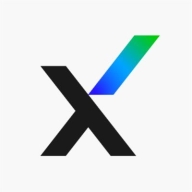

Splunk Enterprise Security and Trellix ESM are leading solutions in the security information and event management (SIEM) space. Splunk holds the upper hand due to its advanced data integration capabilities and scalability, making it desirable for larger enterprises.
Features: Splunk excels in providing intuitive dashboards, extensive log monitoring, and robust data integration capabilities. Its ability to quickly extract and analyze data sets from various environments is appreciated. Trellix ESM offers effective log monitoring and customizable dashboards but lacks the extensive data handling seen in Splunk.
Room for Improvement: Splunk requires significant technical expertise to navigate its complexity, especially with customized queries and data handling. Cost is also a concern for smaller organizations. Trellix ESM needs to improve its integration capabilities, offering enhanced customization and a better user interface.
Ease of Deployment and Customer Service: Splunk provides versatile deployment options across public, private, and hybrid clouds but experiences mixed technical support reviews. Trellix ESM is deployed on-premises and hybrid cloud, valued for its straightforward deployment yet challenged by scalability in larger environments. Its customer service is generally responsive, with room for improved resource accessibility.
Pricing and ROI: Splunk is considered expensive, especially for smaller organizations, justified by robust features and flexibility, offering strong ROI through operational efficiencies. Trellix ESM is competitively priced, seen as cost-effective for small to medium enterprises, providing a balance between expense and capabilities, albeit its premium features suggest a higher price point.
The documentation for Splunk Enterprise Security is outstanding. It is well-organized and easy to access.
We couldn't calculate what would have been the cost if they had actually gotten compromised; however, they were in the process, so every investment was returned immediately.
On average, my SecOps team takes probably at least a quarter of the time, if not more, to remediate security incidents with Splunk Enterprise Security compared to our previous solution.
We have paid for Splunk support, and we’re not on the free tier hoping for assistance; we are a significant customer and invest a lot in this service.
I have had nothing but good experiences with Splunk support, receiving timely and helpful replies.
We've had great customer success managers who have helped us navigate scaling from 600 gigs to 30 terabytes.
I would rate support for Trellix ESM 10 out of 10 because if we connect with the support in the UK, we get excellent support.
It's rare for me to need them unless it's an issue with licensing, and they are the best in that regard.
We currently rely on disaster recovery and backup recovery, which takes time to recover, during which you're basically blind, so I'm pushing my leadership team to switch over to a clustering environment for constant availability.
They struggle a bit with pure virtual environments, but in terms of how much they can handle, it is pretty good.
It is easy to scale.
Scalability is quite easier with Trellix ESM, because all we need to do is add more receivers to it, so it can go to any point.
They test it very thoroughly before release, and our customers have Splunk running for months without issues.
Splunk has been very reliable and very consistent.
It provides a stable environment but needs to integrate with ITSM platforms to achieve better visibility.
Improving the infrastructure behind Splunk Enterprise Security is vital—enhanced cores, CPUs, and memory should be prioritized to support better processing power.
Splunk Enterprise Security is not something that automatically picks things; you have to set up use cases, update data models, and link the right use cases to the right data models for those detections to happen.
For any future enhancements or features, such as MLTK and SOAR platform integration, we need more visibility, training, and certification for the skilled professionals who are working.
If there is any device which is not covered, there should not be any additional charges for writing the custom parsers on that.
I saw clients spend two million dollars a year just feeding data into the Splunk solution.
The platform requires significant financial investment and resources, making it expensive despite its comprehensive features.
I find it to be affordable, which is why every industry uses it.
This capability is useful for performance monitoring and issue identification.
I assess Splunk Enterprise Security's insider threat detection capabilities for helping to find unknown threats and anomalous user behavior as great.
Splunk Enterprise Security provides the foundation for unified threat detection, investigation, and response, enabling fast identification of critical issues.
The weakest point is it doesn't cover almost all the devices, so the customer has to be more dependent on the parsers to be written by the Professional Services team.
| Product | Market Share (%) |
|---|---|
| Splunk Enterprise Security | 9.2% |
| Trellix ESM | 1.1% |
| Other | 89.7% |


| Company Size | Count |
|---|---|
| Small Business | 109 |
| Midsize Enterprise | 49 |
| Large Enterprise | 257 |
| Company Size | Count |
|---|---|
| Small Business | 15 |
| Midsize Enterprise | 6 |
| Large Enterprise | 24 |
Splunk Enterprise Security delivers powerful log management, rapid searches, and intuitive dashboards, enhancing real-time analytics and security measures. Its advanced machine learning and wide system compatibility streamline threat detection and incident response across diverse IT environments.
Splunk Enterprise Security stands out in security operations with robust features like comprehensive threat intelligence and seamless data integration. Its real-time analytics and customizable queries enable proactive threat analysis and efficient incident response. Integration with multiple third-party feeds allows detailed threat correlation and streamlined data visualization. Users find the intuitive UI and broad compatibility support efficient threat detection while reducing false positives. Despite its strengths, areas such as visualization capabilities and integration processes with cloud environments need enhancement. Users face a high learning curve, and improvements in automation, AI, documentation, and training are desired to maximize its potential.
What Are the Key Features of Splunk Enterprise Security?In specific industries like finance and healthcare, Splunk Enterprise Security is instrumental for log aggregation, SIEM functionalities, and compliance monitoring. Companies leverage its capabilities for proactive threat analysis and response, ensuring comprehensive security monitoring and integration with various tools for heightened operational intelligence.
Make your organization more resilient and confident with Trellix Security Operations. Filter out the noise and cut complexity to deliver faster, more effective SecOps. Integrate your existing security tools and connect with over 650 Trellix solutions and third-party products.
We monitor all Security Information and Event Management (SIEM) reviews to prevent fraudulent reviews and keep review quality high. We do not post reviews by company employees or direct competitors. We validate each review for authenticity via cross-reference with LinkedIn, and personal follow-up with the reviewer when necessary.